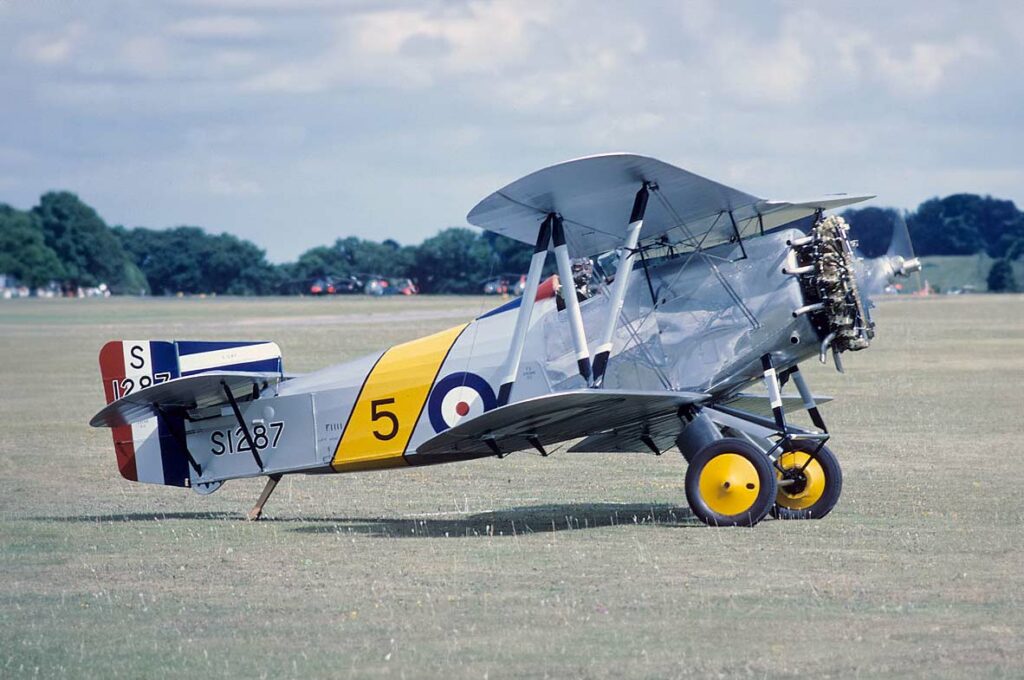The Fairey Flycatcher, an interwar British naval biplane, excelled in versatility with a Jaguar IV engine, characterized by robust construction and carrier operability. This article provides an extensive overview of the Fairey Flycatcher, covering its development history, design features, performance specifications, and military service. The Flycatcher played a crucial role in the evolution of naval aviation during the interwar period, setting standards for future carrier-based aircraft.
The Fairey Flycatcher holds a distinguished place in the annals of military aviation as a pioneering naval fighter of the British Royal Navy’s Fleet Air Arm. This article delves into the development, design, performance, and operational history of this iconic aircraft.
History of the Development of the Fairey Flycatcher:
In the aftermath of World War I, naval aviation was in its infancy, and there was a pressing need for specialized aircraft capable of operating from aircraft carriers. This requirement led to the development of the Fairey Flycatcher in the early 1920s, a period marked by rapid technological advancements and a reevaluation of military strategies.
The Flycatcher was designed by the Fairey Aviation Company, a prominent British aircraft manufacturer. Launched as a response to the Admiralty’s specification for a new shipborne fighter, the program was aimed at creating an aircraft that could excel in the challenging conditions of naval operations. Fairey’s design, led by Chief Designer M. J. N. Royds, prioritized robustness, versatility, and carrier operability.
The Flycatcher first flew in 1922, quickly proving its worth as an effective and reliable naval fighter. It was developed during a time when biplanes dominated military aviation, and its creation was driven by the need for an aircraft that could operate effectively from the decks of moving ships, a relatively new concept at that time.
Design of the Fairey Flycatcher:
The design of the Fairey Flycatcher was tailored to meet the unique demands of naval aviation. It was a single-seat biplane with a wingspan of 28 feet (8.53 meters) and a length of 22 feet 6 inches (6.86 meters). The aircraft featured a mixed construction, with a metal fuselage and wooden wings, both covered in fabric.
Powered by the Armstrong Siddeley Jaguar IV radial engine, the Flycatcher was capable of producing around 400 horsepower (298 kW). This engine choice struck a balance between power and reliability, crucial for operations at sea.
The Flycatcher’s design included several innovations. It had folding wings for easier storage on aircraft carriers, an arrestor hook for deck landings, and was capable of being equipped with flotation gear for emergency water landings. These features made the Flycatcher a versatile and adaptable aircraft for naval operations.
However, its mixed construction and biplane design limited its speed and maneuverability compared to later monoplane designs. Despite these limitations, the Flycatcher set a standard for subsequent naval aircraft, particularly in terms of carrier operability and versatility.

Performance of the Fairey Flycatcher:
In terms of performance, the Fairey Flycatcher was characterized by its suitability for carrier operations rather than outright speed or agility. The Jaguar IV engine enabled a top speed of around 138 mph (222 km/h). The aircraft had a service ceiling of approximately 20,000 feet (6,096 meters) and a range of 300 miles (483 km).
When compared to its contemporaries, such as the American Boeing F2B, the Flycatcher was not as fast or agile. However, its design was specifically tailored for the rigors of naval aviation, which made direct comparisons somewhat challenging. Its real strength lay in its operational flexibility and robustness in carrier operations.
Military Use and Combat of the Fairey Flycatcher:
The Fairey Flycatcher was primarily used by the Royal Navy’s Fleet Air Arm. Its armament typically consisted of two .303 inch Vickers machine guns, and it had the capability to carry small bombs for light attack missions.
The Flycatcher served throughout the 1920s and into the 1930s, becoming the standard fighter of the Fleet Air Arm during that period. It saw no actual combat, as it was primarily used during a time of relative peace. However, its contribution to naval aviation was significant, particularly in training pilots for carrier operations and in developing naval air tactics.
The Flycatcher was not widely exported and remained a predominantly British aircraft. It was eventually replaced by more advanced monoplane designs, such as the Hawker Nimrod, as technology and tactical requirements evolved.
The Fairey Flycatcher epitomized the transitionary period in naval aviation during the interwar years. As the first specifically designed carrier-based fighter for the Royal Navy, it set the foundation for future developments in naval aircraft design and operation. While it may not have been the fastest or most heavily armed fighter of its time, its significance lies in its pioneering role in the evolution of naval aviation, making it a key aircraft in the history of military flight.
Back to the Warbirds section.